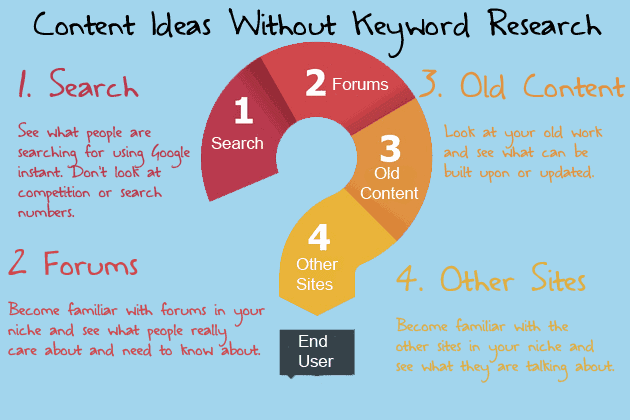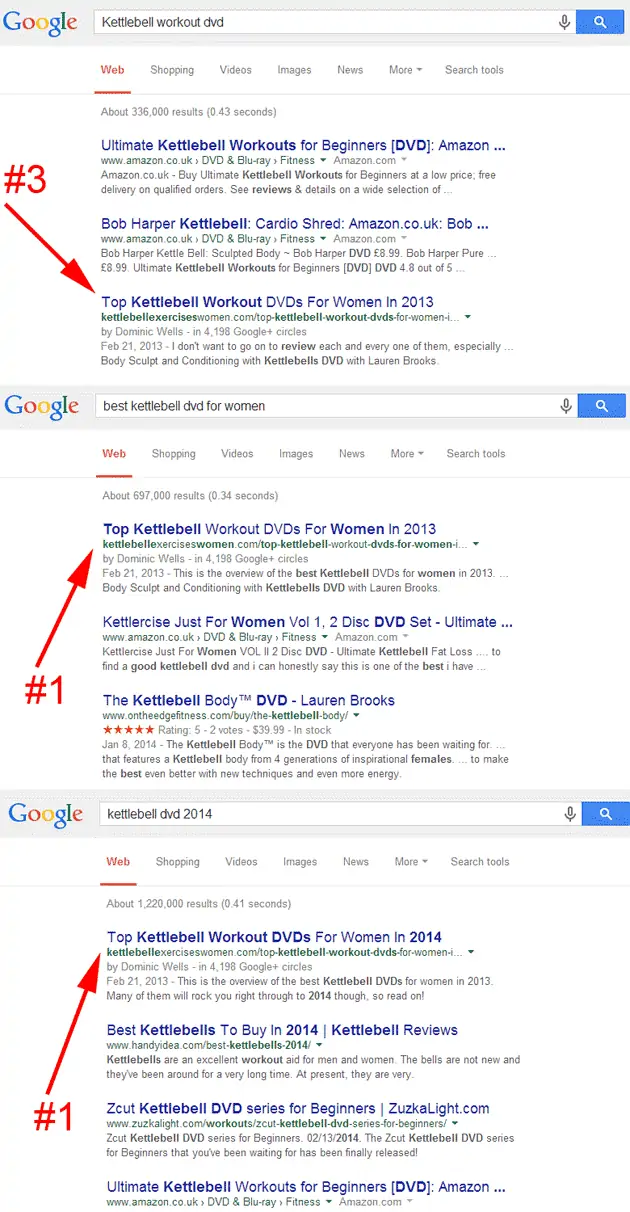If one of the first things you're doing before writing a blog post or creating any form of content is keyword research, then I've got some news for you. You're writing your blog posts backwards. This is my latest “aha” moment from Pat Flynn, following on my last post about how you should be selling to your audience.
In today's post, I'm going to go over exactly how you should construct your content, and the process of creating it, so that by the time you're done reading, you'll be equipped to produce content that your audience won't just consume, but devour.
Where To Begin?
So if keyword research shouldn't be done first, what should you be doing? Well, before any journey takes place, what's the first thing you need to figure out? how to travel? The route to take? No! You've got to first figure out the destination.
What's the “transformation” you want your audience to experience after they've consumed your content? What do you want them to learn, to change, or to realize?
This is the fundamental point of your whole piece, and so it's a natural starting point. It's amazing how simple it is and how many of us forget this. I've spent way too long in the past focusing on keywords, figuring out the core point behind the keyword, and how best to structure the content around it.
I know what you're thinking though. Keyword research is where it all begins. You want to write content that people are searching for, and you want to know that there's weak enough competition that people will find you. After all, what's the point in thinking about transformations, journeys, and stellar content, if nobody is going to read it in the end?
Well. Let me tell you the point.
You've only got 1, maybe 2 minutes to really impress your audience members before they leave. They just have to click a button and oops, they're gone. It doesn't matter if your content matches their search, if you don't impress them, they're off.
However, if you can say to them “By the end of this article, you will know X Y and Z, and feel better about A B and C”, chances are, they're going to read to the end.
By focusing on that very transformation (I'll be using that word a lot), you are setting yourself up to make sure you create compelling content. You'll be writing for THEM, to keep them where you want them, and not to please a search engine.
Besides…I never said you can't use keywords, I just said you shouldn't find them as the first thing you do.
Knowing What To Write About
So let's say you want to do things the other way around. You get what I'm saying, and you want to focus on delivering the content your readers need. How do you know what to write about if you don't use keywords?
Well, does The Media ask people what news they want to see, or does it decide for them? It just seems to know what is important.
To be an authority, you've got to start taking initiative. You've got to “live” your niche and think about what things people are going to need. Here are some ways of coming up with content ideas without using keywords:

At the end of the day, you just want to focus on what will benefit the end user the most, and what kind of journey you can take them on.
Once you've decided what you're going to write about, THEN you can look at keywords that might match, or just forget keywords altogether and let Google decide what keywords to rank you for.
[inlinetweet prefix=”” tweeter=”human_proof” suffix=”HumanProofDesigns”]Remember, everything you write is a keyword, so you don't NEED to force it.[/inlinetweet]
A Case Study On Keywords
You might have noticed that whenever you type a search term into Google, a lot of the time the first results don't exactly match the term you searched for. This isn't an accident, it's because Google doesn't make “exact match” its priority anymore. Instead, it searches for the articles that are related to your topic, and will provide the best user engagement and experience.
See where I'm going with this?
I first became aware of this when I was speaking to Steve at IveTriedThat.com, one of my earliest mentors, and a good friend. I was asking him about using keywords, placing them in content, and all the usual beginner questions, when he responded with a few lines that I found astounding at the time.
I'm paraphrasing, but here's what he said:
“I don't use a keyword tool. If you asked me how to use Jaaxy or any other tool, I couldn't tell you. I just choose titles that I think people will want to click on, for content that I think people will want to read”.
IveTriedThat is a massive site that gets tens of thousands of visitors every month, and is killing it in the search engines.
Steve focuses on the end user and delivering them information. Keywords are for Google to worry about.
Case Study Number Two: A Panda, A Penguin and A Hummingbird Walk Into A Bar..
Sounds like the best bar in the world doesn't it? But what about all that mess!?
OK, in case you have no idea what I'm talking about. Those animals named above are the names of three major updates Google made to how it delivers search results, starting with Panda in 2010 and finishing (so far) with Hummingbird in 2013.
You can learn more about all that by checking out my free eBook “Keywords in 2014”.
To give you the short version, Google ranks you based on your quality, your site engagement levels, and your article “meaning”. Exact match is a thing of the past.
Since Hummingbird, it's easy for an article to rank highly for 4 or 5 different keyword variations, simply because Google knows they are all about the same thing. Therefore, you just need to demonstrate that your content is great, and you'll be up there for dozens of keywords. Still think that you won't rank if you focus on the end users?
Check out one of my sites, Kettlebell Exercises For Women, as an example. In the screenshots below, you'll see that the same article ranks highly for plenty of different keyword variations:

And not a single one of those is an exact match keyword.
How To Structure Your Content
So let's say that I've convinced you at last, and you want to start putting out some seriously good content. How should you structure it?
Well, we need to go back to my (or Pat's), GPS analogy. You've got your destination, now you need to think about the route. In order to take your users from A (before the transformation), to B(the “aha” moment), you need to think about all the obstacles they'll have to go around. Mostly, this means thinking about all the objections they might have to your argument, and structuring your content to slap those arguments down.
That's essentially what I've been doing in this article. I thought about what objections you might have to my case, then I argued against them one by one, and backed my arguments up with supporting evidence.
But I Don't Want To Transform Them?!
You might also be thinking that sometimes, your content is just going to be a simple piece of information or a review of a product. There's no great “Aha” transformation needed.
That may well be the case, but you should still be focusing on what they are looking to get out of your content first, and think about the keywords and other jazz later.
Finally, The Close.
One thing you need to do, is have a strong close. You've got an opener that will tell them what kind of transformation they'll be receiving, and a middle that backs that up, then the end needs to remind them.
So I'm going to close by reminding you that what all this boils down to is the end user. You're not the only person writing in your niche. You're not the only website they can get the information from.
You MUST, make sure that they stay on your page, they love your content, and they think “WOW…I'm coming back here tomorrow”.
Of course, if you can offer them a subscribe button, that's even better.
Do you have any arguments against this method? How do you normally write YOUR content? Let's discuss it below.

